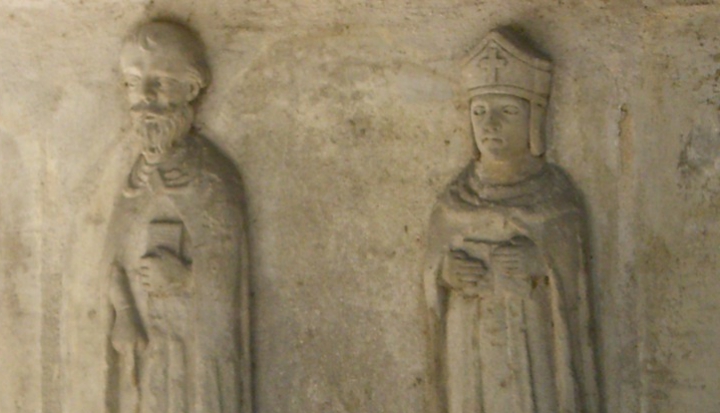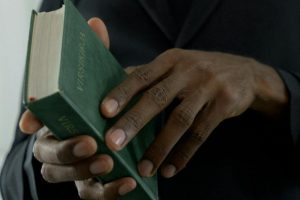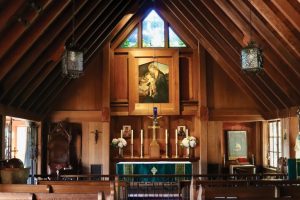Over the past week, friends and acquaintances, news media and Catholic media have been all over this women deacons story. It’s exciting, no doubt, and my friends and acquainances have been practically breathless with elated praise for the pope’s interest in the possibility of women deacons in the Roman Catholic Church.
I want to rejoice with them. But I have mixed feelings.
Let me begin by saying that I think the church ought to ordain women as deacons. And that a papal commission on the issue is long overdue. In 2011, with two of my former U.S. Catholic colleagues, I interviewed Phyllis Zagano, one of the foremost American Catholic scholars on the topic. After reviewing the extensive scholarship of Zagano and others, I would be incredulous if a papal commission came to any conclusion other than a full recommendation that the Roman Catholic Church restores the practice of ordaining women deacons. Yes, I said restores. The scholarship and the evidence that the Christian community has a tradition of ordaining women deacons is there. It’s merely a matter of recognizing it.
So why the mixed feelings? The first is the theology of the diaconate itself, specifically the fact that we have two versions: transitional and permanent. Transitional deacons presumably are called by God to the order of presbyter (we call them priests—an unfortunate misnomer that does not recognize the complete role of this ministry in the church). It’s just that we ordain them deacons first.
The ministries of presbyter and deacon are different. Some have called presbyter and deacon the “two arms of the bishop.” There is some overlap. Both have important liturgical roles—as do non-ordained members of the assembly—but according to canon law, a deacon cannot consecrate the bread and wine. (Honestly, there are lots of great resources on the role of a deacon out there if you’re not familiar with the ministry. I highly suggest starting with our 2011 interview with William Dietwig.)
I believe that the transitional diaconate undermines the church’s diaconal ministry because it implies a second-tier status, rather than a different ministry. In grad school, while studying along side men preparing for the permanent diaconate, I often heard them complain about being asked why they didn’t want to “go all the way” to becoming a priest. To many Catholics, the deacon is a sort of “priest-lite,” a “step down” from priesthood, or a stand-in for priests. While there are many reasons for that, a transitional diaconate is in part—great part—to blame.
I question what that second-tier mentality regarding the deacon will do for overall gender equity in the church if it is the order in which women can serve. Some claim that ordaining women deacons just makes us one step closer to ordaining women priests (ironically, many of those same voices against women deacons are those who like to remind us that the discussion on women priests is closed). But I can’t help wondering if women deacons will serve to codify both second-class status for deacons and further perpetuate gender inequity in the church.
As long as we’re talking about women deacons, why not open up the conversation about doing away with the transitional diaconate, as well? It’s time we lose the stair-step approach to ministry, the one where a cleric first becomes a deacon, then a priest, and, if he’s super holy, a bishop or maybe even a pope. Doing away with the transitional diaconate, in my opinion, would help reshape our thinking into something that sees all ministry—ordained and non-ordained—as rooted first and foremost in our baptismal priesthood.
That would go a long way toward addressing clericalism, a problem cited by the pope that almost certainly has, at least in part, motivated his interest in women deacons.
I believe that clericalism has roots in the particular way the church (by which I mean the whole lot of us—we’re all guilty) talks about ministry in terms of sacred and secular. Addressing this fundamental issue—not just ordaining women deacons—is crucial to dismantling clericalism. Too often, we look at the ordained ministry of priests (presbyters and bishops) as sacred and name the rest of the church’s work—deacons included—as secular. We see and hear this in church documents—including those from Vatican II—in homilies, and in ordinary conversations about lay and religious vocations. And we have used this dichotomy to put priests on pedestals, as if we’re elevating them out of something messy, sinful, and secular and giving them higher, more holy ground.
The permanent diaconate, reinstated by the Second Vatican Council, has certainly challenged that framework. Married men, after all, can be ordained, which has muddied the waters, so to speak, and hued these particular clerics with a more “lay” color. Is it any surprise, then, that the more “lay” order is the one leadership is now willing to discuss for women? What does that say about what the church thinks about women? What does that say about how we think about the church’s lay members? Are we less holy than our sacramentally ordained ministers?
As a part of a conversation about women’s ordained diaconal ministry in the church, we can also do a better job conveying that all ministry, ordained and non-ordained, is rooted in the sacrament of baptism. In that, we are together a church that faces outward, a single community with a joint mission to transform the world in which we are a blessedly integrated part of. Rebuilding and recognizing the communal foundations for leadership will contribute to a stronger, more vibrant community, restore trust in leadership, and call both lay people and clergy to more accountability.
I believe that is how we ought to face clericalism—not merely ordaining women deacons.
That said, I think women deacons could help. I’ll avoid sweeping generalizations about women and our “natural” characteristics, and simply say that I think it’s always a good thing when more voices and more perspectives are added to a conversation. Hearing a woman preach or read the gospel in church is transformative. Male clerics themselves might find themselves transformed by having to listen to women in official capacities. Our conversation about who we are as a church will only get richer if we add women deacons.
But if we stop at the victory of women’s ordination to the diaconate, we’ll just find ourselves circling back around a pedestal, wondering why this problem of clericalism is still following us around.
Image: Flickr cc via Sarah Starkweather. Abelard and Heloise, Cimitière Père-Lachaise, Paris.











